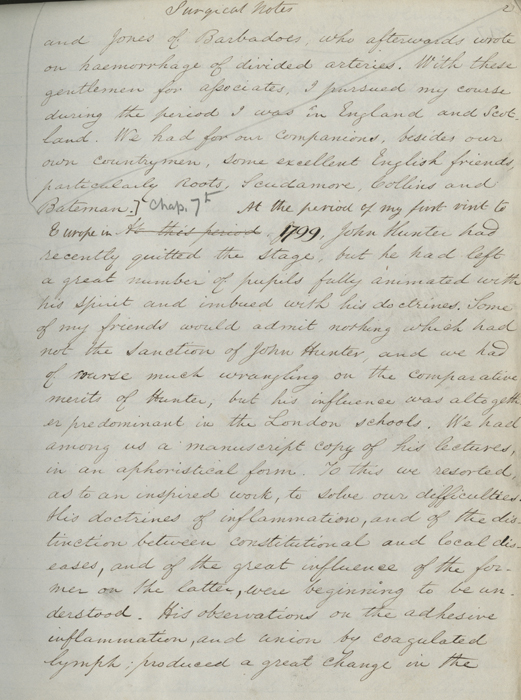After Death
Attributed to American artist John Pope (1820-1880), this portrait was made from a mask and bust, probably just after the death of Dr. Warren.
John Barnard Swett Jackson was Harvard Medical School's first professor of pathological anatomy and first curator of the Warren Anatomical Museum. He published catalogues of the specimens in the museum of the Boston Society for Medical Improvement (1847) as well as the Warren (1870).
Four days after John Collins Warren's death, Dr. Jackson, with the assistance of Calvin Ellis, examined the body and produced this report. Dr. Warren's bones were subsequently preserved and kept for educational purposes in the Warren Anatomical Museum.
Shortly before his own death, Dr. J. Mason Warren began to assemble the manuscript case reports and correspondence of his father, intending to publish this material as a record of Dr. John Collins Warren's years of experience in clinical surgery. That project was never completed, although Dr. J. Collins Warren eventually organized the material and donated it to the Boston Medical Library for its historical value.
On considering whether to inform a patient of incurable illness, Dr. Warren counsels that, in cases of extraordinary suffering, "The physician must interfere and administer those alleviations which science furnishes and humanity calls for. The inhalation of ether is a valuable resource and ought to be adopted, the patient and his friends having been of course previously consulted."



